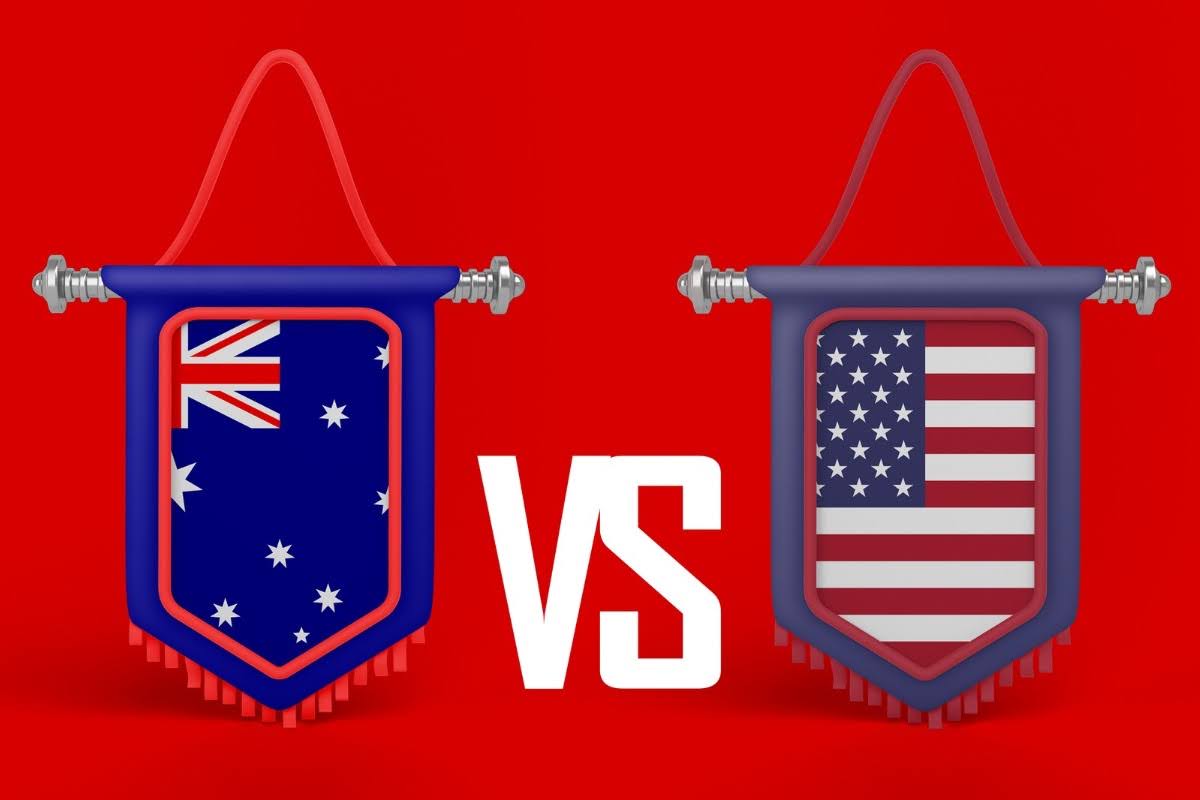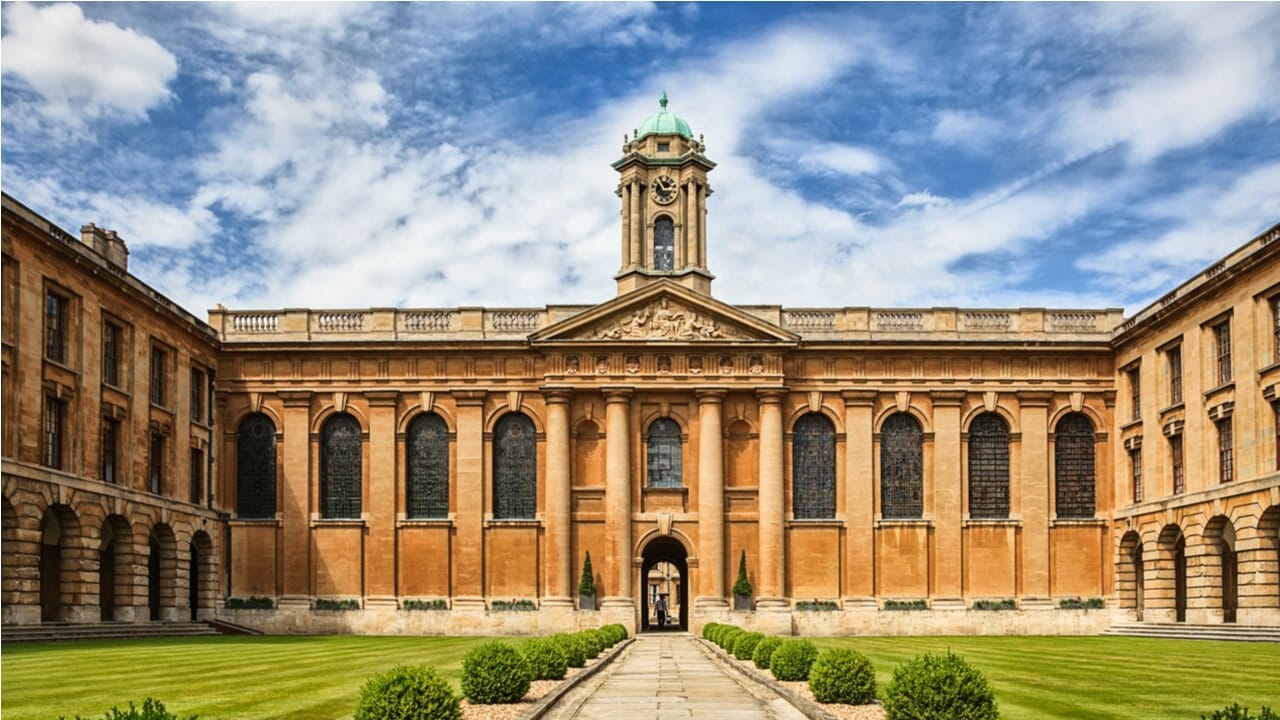Build a rewarding career with top-tier firms like Goldman Sachs and JPMorgan Chase. Pursuing an MBA in Finance in USA is a dream for many international students. The USA is home to the world’s top business schools, including Wharton, Stanford, and Harvard, which consistently rank high in QS Global MBA Rankings. An MBA in Finance equips students with expertise in investment banking, corporate finance, financial analysis, and risk management, skills that are in high demand worldwide.
The USA not only offers world-class education but also provides strong ROI through global career opportunities, salaries averaging ₹75L – ₹1.2Cr annually, and access to top recruiters like Goldman Sachs, JPMorgan Chase, and McKinsey. Let’s explore the fees, eligibility and career scope for international students.
Why an MBA in Finance in USA is a Smart Career Move?
Pursuing an MBA in Finance in the USA offers a combination of academic excellence, industry relevance, international exposure, and strong career prospects.
The opportunity to study at globally recognised business schools, specialise in key industries, connect with a powerful alumni network, and secure promising job opportunities makes the USA an ideal destination for aspiring finance professionals.
Choose your dream country
When do you want to study abroad?
What's your highest level of education?
Select you current city
How Leap will help you
Personalised University Shortlist
Express Applications with Quicker Admits
End-to-End Application Support
Here are some compelling reasons why the USA stands out as a premier destination for this advanced degree:
- Globally Ranked Universities: The USA dominates the QS Global MBA Rankings, with top business schools like Stanford Graduate School of Business (Rank #1), University of Pennsylvania – Wharton (Rank #2), and Harvard Business School (Rank #3) consistently leading worldwide. This global recognition makes an MBA in Finance from the USA highly valued by employers across industries.
- High ROI Careers: Graduates earn up to ₹1.2Cr annually in finance-related roles if they meet the above conditions, such as strong academic performance, internships, certifications, and networking.
- Diverse Specialisations: From corporate finance to fintech, students can explore a wide range of electives.
- Networking Opportunities: Access to strong alumni networks and internships on Wall Street & Silicon Valley.
- OPT & H-1B Visa Benefits: International students can extend their stay post-study for work opportunities.
Top 10 Universities for MBA in Finance in USA for Indian Students in 2026
When pursuing an MBA in Finance, the USA boasts some of the world's most prestigious business schools. These institutions offer rigorous academic programs, unparalleled resources, and networking opportunities, setting the stage for a successful career in finance.
Here are the top universities for MBA finance in USA, along with specialisations, key highlights, estimated annual tuition fees and QS MBA rankings for 2026:
| University | QS Global MBA Ranking 2025* | Average Annual Tuition Fees ($/₹) | Specializations & Highlights |
|---|---|---|---|
| Wharton School, University of Pennsylvania | #1 | $80,000 (~₹71L) | Finance, Quantitative Finance, Investment Banking |
| Harvard Business School | #2 | $73,440 (~₹65.2L) | Finance, General Management |
| MIT Sloan School of Management | #3 | $82,000 (~₹72.8L) | Finance, Fintech, Corporate Finance |
| Stanford Graduate School of Business (GSB) | #4 | $79,860 (~₹70.9L) | Corporate Finance, Private Equity |
| Northwestern University – Kellogg School of Management | #9 | $74,871 (~₹66.4L) | Corporate Finance, Strategic Leadership |
| Columbia Business School | #10 | $80,472 (~₹71.4L) | Value Investing, Corporate Finance |
| Yale School of Management | #12 | $74,560 (~₹66.2L) | Finance, Asset Management, Sustainable Investing |
| University of Chicago – Booth School of Business | #15 | $77,841 (~₹69.1L) | Data-driven Finance, Investment Analysis |
| NYU Stern School of Business | #17 | $78,700 (~₹69.8L) | Corporate Finance, Investment Banking |
| Duke University – Fuqua School of Business | #24 | $71,750 (~₹63.7L) | Corporate Finance, Investment Banking, Healthcare Finance |
*Source: QS World University Rankings by Subject 2025
Each of these universities provides a unique learning environment, offering specialised programs and resources that cater to the evolving needs of the finance sector. Studying at one of these top institutions not only equips students with cutting-edge financial knowledge but also connects them with a powerful network of alumni and industry leaders, paving the way for a prosperous career in finance.
Eligibility Criteria for Indian Students Studying MBA in Finance in USA in 2026
Understanding MBA in finance in USA eligibility criteria is essential before applying. Most top schools look for:
- Bachelor’s Degree: A four-year undergraduate degree in any discipline.
- Work Experience: Typically 3–5 years. However, see the next section for options without work experience.
- GMAT/GRE Scores: Competitive scores are necessary; top finance programs usually require above 700 GMAT.
- English Language Proficiency: TOEFL or IELTS scores for non-native speakers.
- Letters of Recommendation (LORs): Typically, 2-3 LORs from professional supervisors, managers, or professors.
- Statement of Purpose (SOP) / Essays: A compelling SOP or MBA essay is crucial.
- Resume / CV: An updated professional resume (1-2 pages).
- Interviews: Shortlisted candidates are invited for a personal or virtual interview.
MBA in Finance Syllabus in USA for Indian Students
The curriculum is designed to balance theoretical knowledge with practical application.
Core Courses
- Financial Accounting
- Corporate Finance
- Microeconomics & Macroeconomics
- Data Analytics for Decision Making
- Leadership & Organizational Behavior
Electives
- Investment Analysis & Portfolio Management
- Advanced Corporate Finance (M&A, LBOs, Valuation)
- Financial Modelling (hands-on Excel/Excel VBA)
- Derivatives & Risk Management
- Behavioral Finance
- Fintech & Blockchain
This syllabus equips students to tackle real-world challenges and specialise in emerging fields like fintech, AI in finance, and sustainable investing.
Specialisations
Students can further tailor their programs by choosing high-demand specialisations like:
- Investment Banking
- Corporate Finance
- Financial Technology (Fintech)
- Risk & Asset Management
- Private Equity & Venture Capital
- Sustainable Finance
Cost of Studying MBA in Finance in USA for Indian Students in 2026
Understanding the cost is key to planning your investment. MBA in finance in USA fees are explained in the table below provides a breakdown of the typical annual expenses, including tuition, living costs, health insurance, and other miscellaneous expenses for international students.
| Expense | Annual Cost (USD) | Annual Cost (INR) |
| Tuition Fees | $60,000 - $90,000 | ₹53.2L - ₹79.9L |
| Living Expenses | $15,000 - $25,000 | ₹13.3L - ₹22.1L |
| Health Insurance | $1,500 - $3,000 | ₹1.3L - ₹2.6L |
| Miscellaneous | $2,000 - $4,000 | ₹1.7L - ₹3.5L |
| Total | $80,000 - $120,000 | ₹71L - ₹1.06Cr |
The Cost of living in USA varies by city. Living in New York, Boston, or California is more expensive compared to smaller cities.
Top Jobs after MBA in Finance in USA for Indians
The MBA Finance salary in USA varies depending on factors such as specialisation, industry, job role, experience, and the business school's reputation.
The table summarises the average salary ranges for different specialisations and industries.
Here are some most demanded jobs in the USA, along with their salary:
| Job Role | Average Annual Salary (USD) | Average Annual Salary (INR) |
| Investment Banker | $110,000 - $150,000 | ₹97.6L - ₹1.33Cr |
| Financial Analyst | $75,000 - $95,000 | ₹66.5L – ₹84.3L |
| Corporate Finance Manager | $95,000 – $120,000 | ₹84.3L – ₹1.06Cr |
| Risk Manager | $90,000 – $110,000 | ₹79.9L – ₹97.6L |
| Private Equity Associate | $130,000 – $160,000 | ₹1.15Cr – ₹1.42Cr |
Factors influencing salary levels include the graduate's work experience, the geographic location of the job, and the prestige of the MBA program completed. Graduates from top-tier business schools often command higher starting salaries and have better advancement opportunities.
Top Career Paths with an MBA in Finance for Indian Students
An MBA in Finance opens doors to multiple lucrative career avenues:
- Investment Banking: Advising corporations and governments on raising capital, M&A, and IPOs.
- Corporate Finance: Managing company budgets, forecasting, and strategic financial planning.
- Private Equity & Venture Capital: Investing in companies with high growth potential.
- Asset Management: Managing investments like stocks and bonds for individuals or institutions.
- Financial Consulting: Advising businesses on strategy, restructuring, and financial operations.
Top Recruiters for MBA in Finance Graduates in 2026
Top companies and organisations in the USA actively recruit MBA graduates, particularly those specialising in finance. These employers span various industries, including banking, consulting, technology, and healthcare.
Below is a table highlighting some top recruiters for MBA in Finance graduates.
| Company | Industry | Average Salary (USD/INR) |
| Goldman Sachs | Investment Banking | $150,000 - $200,000 (₹1.33Cr - ₹1.77Cr) |
| JPMorgan Chase & Co. | Financial Services | $140,000 - $190,000 (₹1.24Cr - ₹1.68Cr) |
| McKinsey & Company | Consulting | $140,000 - $180,000 (₹1.24Cr - ₹1.59Cr) |
| Boston Consulting Group (BCG) | Consulting | $135,000 - $175,000 (₹1.19Cr - ₹1.55Cr) |
| Deloitte | Professional Services | $120,000 - $160,000 (₹1.06Cr - ₹1.42Cr) |
| Morgan Stanley | Financial Services | $145,000 - $190,000 (₹1.28Cr - ₹1.68Cr) |
| Bank of America Merrill Lynch | Banking | $130,000 - $180,000 (₹1.15Cr - ₹1.59Cr) |
| KPMG | Accounting and Consulting | $110,000 - $150,000 (₹97.6L - ₹1.33Cr) |
| Citigroup | Financial Services | $135,000 - $185,000 (₹1.19Cr - ₹1.64Cr) |
| Amazon | Technology and Retail | $120,000 - $170,000 (₹1.06Cr - ₹1.50Cr) |
These companies are known for their rigorous recruitment processes, including internships, on-campus recruitment drives, and partnerships with top business schools. Graduates from these programs benefit from robust alumni networks and career services that facilitate connections with potential employers.
Overall, an MBA in Finance from a top USA business school provides graduates with the skills and opportunities to pursue high-level, rewarding careers across various industries.
Conclusion
Pursuing an MBA in Finance in the USA can be a transformative step for ambitious finance professionals. The program not only equips students with advanced financial knowledge and analytical skills but also opens doors to high-paying roles in investment banking, corporate finance, and consulting. By carefully selecting the right university, specialisation, and networking opportunities, graduates can maximise their career growth and achieve a strong return on investment.
If you’re planning your MBA journey, LeapScholar can help you shortlist universities, apply for scholarships and secure admissions to top US B-schools. Get expert counselling today and make your MBA dream a reality.
Frequently Asked Questions (FAQs)
-
Is an MBA in Finance worth it in the USA?
Yes. An MBA in Finance in the USA is one of the most rewarding degrees globally. It not only equips students with advanced financial knowledge and leadership skills but also provides access to Wall Street firms, consulting giants, and global banks. With the USA hosting some of the world’s top-ranked business schools (Wharton, Harvard, Stanford), graduates gain a strong brand name, a global alumni network, and lucrative job opportunities.
-
How much does it cost to do an MBA in Finance in USA?
The cost of an MBA in Finance in the USA ranges between $70,000 - $82,000 per year (₹62.1 Lakh - ₹72.8 Lakh) at top universities like Harvard, Wharton, or MIT Sloan.
- Affordable universities may charge around $40,000 - $55,000 per year (₹35.5 Lakh - ₹48.8 Lakh).
- Living expenses add another $15,000 - $25,000 per year (₹13.3 Lakh - ₹22.1 Lakh) depending on the city. -
What is the salary of an MBA in Finance in the USA?
On average, MBA in Finance graduates earn $95,000 - $120,000 annually (₹84.3 Lakh - ₹1.06 Cr). At elite B-schools like Wharton or Stanford, average salaries often exceed $150,000 (₹1.33 Cr), especially in investment banking, hedge funds, or private equity.
-
Which university is best for an MBA in Finance in the USA?
According to QS Global MBA Rankings 2026, the best universities for MBA in Finance in the USA are:
- Wharton School, University of Pennsylvania (#1 globally)
- Harvard Business School (#2)
- MIT Sloan School of Management (#3)
- Stanford GSB (#4)These institutions are globally renowned for their finance curriculum, Wall Street connections, and placement opportunities.
-
Which MBA is highly paid in the USA?
The most highly paid MBA specialisations in the USA include:
- Finance (especially investment banking, private equity, hedge funds)
- Strategy & Consulting
- Technology Management
- Healthcare Management
Among these, the MBA in Finance consistently ranks at the top, with graduates earning over $120,000 (₹1.06 Cr) annually in leading firms. -
Is MBA Finance equal to CA?
No, MBA Finance and CA (Chartered Accountancy) are different career paths:
- MBA in Finance (USA): Focuses on corporate finance, investment banking, financial strategy, and leadership roles. It prepares you for executive and managerial positions in global firms.
- CA (India): Focuses on auditing, taxation, and accounting. It’s a highly respected professional qualification, but its scope is mostly in compliance and financial reporting, with career growth primarily in India.
















Have Questions? Get Guidance to reach your Dream University
Connect with India's finest counsellors and biggest study abroad community.
Get Guidance